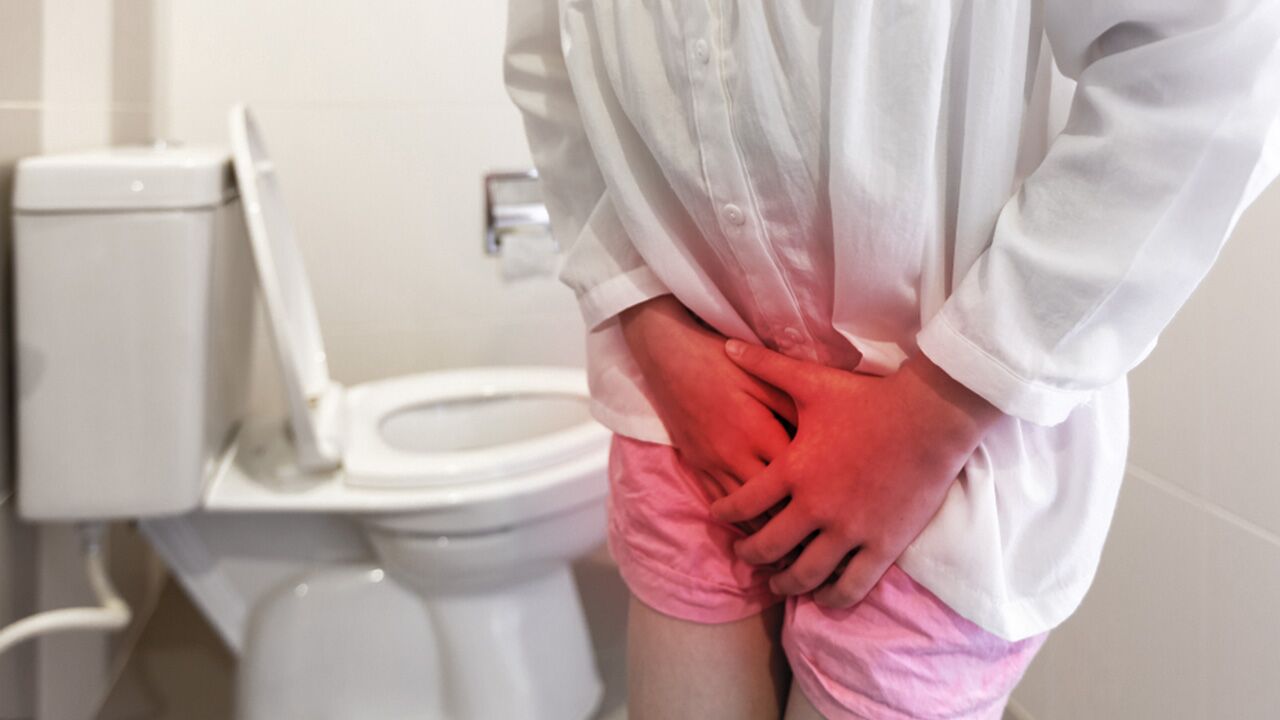Urinary Tract Infections: Symptoms, Causes, Treatment
 By: by Amino Science
By: by Amino Science

Urinary tract infections (UTIs) can be painful and extremely dangerous, particularly when left undiagnosed. Some people may not even know they have a urinary tract infection. Therefore, they may not understand the urgent need to treat it. If a UTI is left untreated, it can spread to the kidneys and cause kidney infections and, if it travels to the bloodstream, can have deadly consequences.
Women are at a higher risk for urinary tract infections. A 2011 study pegged the number of UTI visits to American health care providers at 8.1 million, according to the National Institutes of Health, or NIH.
Often, the trips to seek treatment are to emergency rooms. In fact, the only condition landing people in emergency rooms in the United States more often than UTIs was pneumonia.
Causes of UTIs
Urinary tract infections take root in the lower urinary tract (the urethra and bladder) or the upper urinary tract (the kidneys), which tends to lead to the most intense symptoms.
The type of UTI depends on where it takes root in the body. Cystitis is the term used to indicate a bladder infection. Urethritis indicates an infection of the urethra. And a kidney infection is called pyelonephritis.
When bacteria from the urethra or rectum creep up into the bladder and kidneys, a UTI may not be far behind. Your immune system is equipped to fight off the unwanted bacteria, but there are times when the invader is too strong and an infection takes root.
Responsible for around 80% of infections, Escherichia coli bacteria is the most common type of bacteria that causes UTIs. Staphylococcus saprophyticus is a natural part of vaginal microflora, but can travel to the urethra during sex and also cause UTIs.
Common risk factors include:
- Shorter urethras in women
- Increased sexual activity
- Diaphragms for birth control, which can be reservoirs of bacteria
- Spermicidal lubricants that cause inflammation
- An enlarged prostate or kidney stones that block the flow of urine so that bacteria isn't flushed from the bladder
- Trapped bacteria under the foreskin of uncircumcised men
- Diabetes may result in high urine glucose that provides food for harmful bacteria
- Bacterial changes to vaginal microfloral during menopause
- Non-sterile catheters or long-term use of catheters
- Feminine hygiene products
- Potty training
Diagnosing Urinary Tract Infections
Early signs of a UTI, according to Mayo Clinic, may include:
- Cloudy urine
- Frequent urination of small amounts
- Dark urine (blood in urine)
- Odorous, pungent urine (smelly)
- Pelvic pain in women or pressure in the lower abdomen
- Confusion in older adults
- Constant urge to urinate and painful urination
- A burning sensation when urinating
Symptoms of a UTI left untreated can include confusion, fever and chills, vomiting, and upper back and side pain.
Your doctor likely will ask for a urine sample to detect bacteria and confirm a bladder infection. Additional tests such as a urine culture or diagnostic imaging with hysteroscopy may be used to determine the extent of the infection and specific type of bacteria.
A hysteroscopy is a camera on a thin line, or wire, that enters through the vagina. It can get a good look inside the cervix and uterus. It is about as uncomfortable as a monthly period for about a week to 10 days after the procedure. There are additional risks your doctor will discuss with you, including vaginal bleeding and possible injury.
It is standard practice for pregnant women to get tested for bacteria in their urine even when there are no symptoms of a urinary tract infection. This is because a UTI can be dangerous for both mother and child, and antibiotics are prescribed to prevent this unnecessary complication.
Treating Urinary Tract Infections
Treating urinary tract infections with a course of antibiotics, either with a single dose or in some cases a daily dose for up to a week, usually is successful, but increasingly, antibiotic-resistant bacteria are proving dangerous to the elderly and those with compromised immune systems. While the most common form of bacteria to invade the urinary tract is E. coli, many other strains also bombard the urinary system and reproductive tract. Some have developed resistance to common antibiotics.
“UTIs result in considerable economic and public health burdens and substantially affect the life quality of affected individuals,” concluded the authors of a 2015 paper published in Nature Reviews Microbiology. “Increasing rates of antibiotic resistance and high recurrence rates threaten to greatly enhance the burden that these common infections place on society.”
They say new therapies are needed because UTIs are developing resistance to antibiotics.
Natural UTI Treatments
While futuristic treatment and prevention ideas are being pursued in the fight against urinary tract infections, many of which are acquired in hospitals, natural treatments also exist. But because urinary tract infections are so dangerous, any natural UTI solution should be attempted in consultation with your doctor. Your doctor may also prescribe other medications in addition to natural UTI treatments. If you believe you may have a urinary tract infection and it does not clear up within 48 hours, call a doctor.
Mannosides
Mannosides are drugs that actually are made from naturally occurring sugars such as D-Mannose. The sugars interact with cell receptors in such a way as to prevent the bacteria that infect cells from latching on. Plus, at least in mouse models, it appears bacteria don’t become resistant to mannosides because they affect cellular activity from the outside instead of the inside.
In a clinical study of 308 women with chronic UTI infections, the subjects were randomized either to a prescription antibiotic called nitrofurantoin, D-mannose powder, or nothing. Of the 308, over the course of 6 months, only 14.6% of those in the D-mannose group became infected with another UTI. That group outperformed the next runner-up, the antibiotic, where 20.4% became infected, and the no-treatment group, where more than 60% had recurrent infections.
The study appeared in The World Journal of Urology in 2014. Numerous products containing D-mannose are available online, both in capsule and powder form. Powder is what was used in the study. Study participants received 2 grams of D-mannose powder dissolved in 200 milliliters of water daily.
Cranberries
Exploding with disease-fighting nutrients known as anthocyanins, cranberries long have been a turn-to for Americans looking for home remedies to UTIs. A small 2009 clinical trial among women 45 and older proved cranberry extract almost as effective at preventing urinary tract infections as the antibiotic trimethoprim. However, the cranberry extract had fewer side effects. The research appeared in the Journal of Antimicrobial Chemotherapy.
But more recent research says not so fast. A 2012 Cochrane review concluded that while cranberry juice is as effective at preventing UTIs as antibiotics (which according to this review didn’t work so well either), that’s only true if patients stick to the plan. Most drop out due to the bitter taste of cranberry juice, not to mention the fact that it’s loaded with sugar, which isn’t good for anyone in large daily doses.
Cranberry extract in powder and pill form available online simply cannot be guaranteed effective and there is no way to know if it is stocked with enough active ingredients, the authors also concluded.
Probiotics
Studies show probiotics prevent recurrent urinary tract infections. Doctors and scientists do not feel comfortable yet saying probiotics work as an effective alternative to antibiotics in the treatment of urinary tract infections. However, it is an option under study.
In women, UTIs often occur simply due to the inconvenient placement of the vagina to the anus. It is simply too easy for bacteria to travel from one to the other. Sexual intercourse is also a risk factor for UTIs. For both of these reasons, it makes good sense that healthy vaginal flora supported by externally applied probiotics helps prevent UTIs.
“Lactobacilli may especially be useful for women with a history of recurrent, complicated UTIs or on prolonged antibiotics use,” the authors of a review on the topic published in the Indian Journal of Medical Microbiology concluded. “Probiotics do not cause antibiotic resistance and may offer other health benefits due to vaginal recolonization with Lactobacilli.”
Garlic
Garlic has proven effective against some bacteria that cause UTIs even when antibiotics are not, but only in a test tube. The results of that study appeared in Pertanika Journal of Tropical Agricultural Science.
“It is interesting to note that even crude extracts of this plant showed good activity against multidrug resistant strains where antibiotic therapy had limited or no effect,” the authors concluded. “This provides hope for developing alternative drugs which may be of help in fighting the menace of growing antibacterial resistance.”
Garlic is available online in capsule supplement form for urinary tract prevention.
OTC Medications for UTIs
There are no over-the-counter cures for UTIs, only products that claim to prevent infections or treat the pain associated with UTIs. AZO Urinary Pain Relief is made with phenazopyridine hydrochloride, which ordinary pain relievers do not contain. It can help ease UTI symptoms while you wait for the antibiotic to take effect. Relief should begin within a day or two after beginning antibiotics.
Vaccines for UTIs
Scientists are working hard to develop vaccines for urinary tract infections. They are approaching this challenging task from several directions, including vaccines targeting bacterial adhesion. Vaccines targeting bacterial adhesion would make it difficult for bacteria to colonize in the bladder due to the protection conferred by the antibodies the vaccine activates. So far, scientists have seen success in mice and monkeys, according to a 2015 paper published in Nature Reviews Microbiology.
Other approaches target bacterial toxins, siderophores, and proteases, with mixed success and only in laboratory animals. Siderophores are molecules that transport iron; proteases are natural enzymes that break down proteins. UTI bacteria must hitch a ride on siderophores in order to grow. Less success has been found targeting proteases, which also aims to interfere with the bacterial colonization process.
Sexual Health and UTIs
For a woman, urinary tract infections sometimes are just a natural part of having a new sex partner. That’s because she is entering new bacteria into her urinary tract when she has sex. For some women, sex can result in a UTI almost every time, and for certain with each new partner.
How to reduce your risk of UTIs? Try to always urinate after each session. This goes for men too. While men are at less risk due to their biological makeup, bacteria also can get in through the male urethra. Men need to be cognizant of entering unknown territory and use condoms to protect both themselves and their partner. Men and women both should immediately shower after sex and gently wash their genital areas.
Wiping from front to back after urinating or a bowel movement will help prevent bacteria from moving from the rectum to the urethra.
By staying hydrated and using common sense about sexual and reproductive freshness, UTIs often can be avoided. And even when they can’t, the good news is that doctors and scientists are working hard to find solutions to antibiotic-resistant strains.
You can also take an essential amino acid supplement to help boost overall health an immunity. Every little bit of support helps!


Up to 25% off Amino
Shop NowTAGS: conditions
Join the Community
Comments (0)
Most Craveable Recipes




 833-264-6620
833-264-6620



















